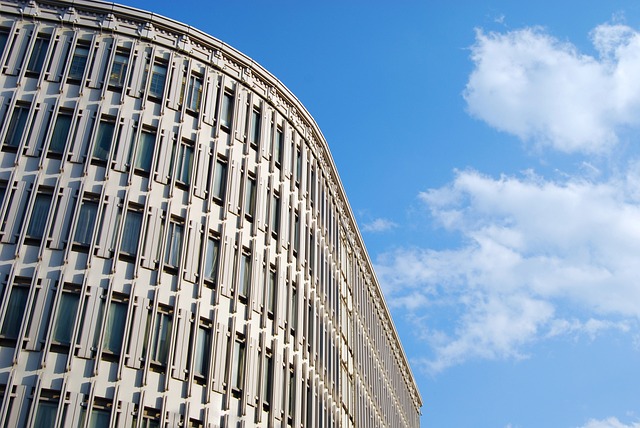Blueprint drafting services are vital for implementing sustainable architecture, enabling designers to translate eco-conscious concepts into reality through efficient energy use, green material choices, and adherence to environmental standards, all while navigating local regulations.
Discover the art of crafting eco-conscious spaces with sustainable architecture. This innovative approach redefines building design, prioritizing environmental harmony and efficiency. In this guide, we explore the fundamentals of sustainable architecture principles and their impact on shaping a greener future. From initial concept to construction, learn how professional blueprint drafting services play a pivotal role in creating eco-friendly blueprints. Uncover strategies for integrating renewable energy solutions and materials that promote sustainability, ensuring both functionality and environmental stewardship.
Understanding Sustainable Architecture Principles
Sustainable architecture is a holistic approach to building design that prioritizes environmental responsibility, social equity, and economic viability. At its core, it involves creating structures that minimize their ecological footprint while maximizing energy efficiency and resource conservation. Blueprint drafting services play a pivotal role in translating these abstract principles into tangible, eco-friendly building designs.
By integrating sustainable practices from the initial conception phase, architects can develop innovative solutions such as passive solar heating, natural ventilation, and rainwater harvesting systems. These strategies not only reduce the building’s reliance on non-renewable energy sources but also contribute to a healthier indoor environment. Blueprint drafting services are instrumental in visualizing these concepts, ensuring that the final architectural plans align with sustainability goals and create harmonious, eco-conscious spaces.
Blueprint Drafting Services for Eco-Friendly Design
In the pursuit of eco-friendly building designs, blueprint drafting services play a pivotal role in translating sustainable architecture concepts into tangible plans. These professional services specialize in creating detailed blueprints that adhere to environmental standards and incorporate green design principles. Through meticulous drafting, they ensure every aspect of a structure—from energy efficiency measures to water conservation systems—is accurately represented, facilitating seamless construction while minimizing ecological impact.
Blueprint drafting professionals leverage advanced software and industry knowledge to integrate renewable technologies, optimize natural lighting and ventilation, and promote sustainable materials usage. Their expertise is invaluable in navigating complex building codes and regulations related to green architecture, ensuring projects not only meet environmental criteria but also comply with local standards.
Incorporating Renewable Energy Solutions
Incorporating renewable energy solutions into building designs is a key aspect of sustainable architecture, and blueprint drafting services play a pivotal role in bringing these eco-friendly ideas to life. Solar panels, wind turbines, and geothermal heat pumps are just a few examples of renewable technologies that can be seamlessly integrated into the structural layout.
Through careful planning and innovative design strategies, architects and engineers can optimize energy efficiency while enhancing the overall functionality and aesthetics of the building. Blueprint drafting services enable detailed visualization and precise implementation, ensuring these renewable energy solutions not only meet environmental standards but also contribute to long-term cost savings for homeowners and businesses alike.
Materials Selection for Environmental Efficiency
When it comes to sustainable architecture, materials selection plays a pivotal role in environmental efficiency. Blueprint drafting services for eco-friendly buildings should prioritize locally sourced, renewable, and low-carbon footprint materials like wood from certified sustainable forests, recycled steel, and biodegradable plastics. These choices not only reduce the carbon emissions associated with transportation but also minimize waste, fostering a circular economy.
Additionally, incorporating natural insulators such as wool, cellulose, and foam made from plant-based sources can significantly enhance energy efficiency. This reduces the reliance on non-renewable energy for heating and cooling, making the building more sustainable in the long run. Blueprinters should also consider materials with high R-values for better thermal resistance, contributing to a healthier indoor environment and lowering operational costs.
Sustainable architecture is not just a trend, but an essential approach to building design that considers environmental impact and resource efficiency. By incorporating principles from understanding sustainable architecture, utilizing blueprint drafting services for eco-friendly designs, integrating renewable energy solutions, and strategically selecting materials, we can create buildings that are both aesthetically pleasing and environmentally responsible. These practices ensure a greener future while meeting the needs of today’s folks, marking a significant step towards a more sustainable world.
